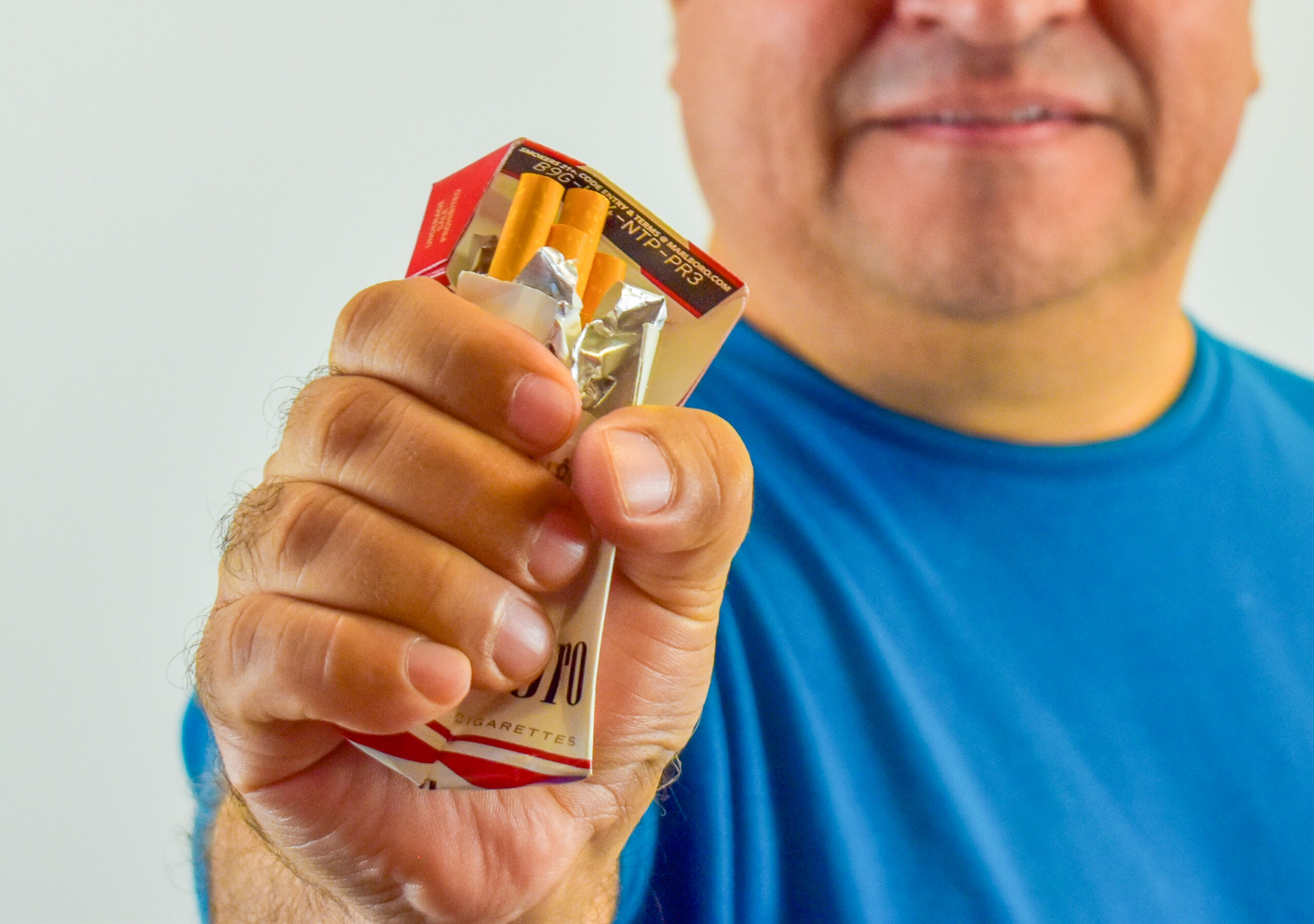
Share On Social!
Only 7.7% of Latino adults in 2021 smoked cigarettes, which is lower than the national prevalence of 11.5%, the Truth Initiative reports.
But the news isn’t all good.
While Latino adults have a lower usage rate of all tobacco products than adults overall, smoking prevalence differs widely within Latino subgroups and by gender.
Let’s explore Latino tobacco use and why it matters for health.
Cigarette Smoking Patterns in Latino Adults
Latinos in the U.S. that identify as Puerto Rican reported the highest current smoking prevalence at 17%. The lowest rates are among Latinos with Central or South American origin (6%), the Truth Initiative reports.
Latina women have a lower smoking rates (6%) than Latino men (12%).
In 2022, 7.8% of young Latino adults reported that they smoked cigarettes in the past 30 days, according to a Monitoring the Future Report.
This is lower than White young adults (9.7%) but higher than Black young adults (4.2%).
Cigarette Smoking Patterns in Latino Youth
Latino American middle-schoolers continue to have a slightly higher rate of cigarette smoking than middle-schoolers overall, at 1.2% compared to 1%, the Truth Initiative reports.
Latino high-schoolers have the same cigarette smoking rate as high schoolers overall, at 2%.
As Latino individuals become more acculturated to the English language and U.S. culture, their cigarette use tends to rise, according to another recent study. People with greater language acculturation were significantly younger and were more likely to be U.S.-born compared to individuals with less language acculturation.
This emphasizes the importance of tailoring smoking prevention strategies for the Latino community with language and culture in mind, as well as other acculturation factors.
E-Cigarettes and Latinos
When it comes to e-cigarettes, 3.3% of Latino adults reported use. This is less than 4.5% of adults overall.
In 2022, Latino high school students reported slightly lower prevalence of e-cigarette use compared to high schoolers overall (12.2% vs. 14.1%).
Latino middle school students reported a slightly higher prevalence of e-cigarette use compared to middle school students overall (4.2% vs 3.3%). E-cigarettes were the most commonly used tobacco product among Latino middle and high school students, at 8.8%.
The health risks of e-cigarettes are real.
The U.S. Surgeon general called teen vaping a national health epidemic. The World Health Organization reports e-cigarettes are “not harmless” and “pose risks to users and non-users.”
Smoking’s Impact on Health
Smoking cigarettes is bad for your health.

Use of smoked or smokeless tobacco can cause heart disease and is a contributor in about 40% of cancer diagnoses, the Truth Initiative reports.
“U.S. -born Hispanic Americans face higher cancer risk compared to those in their country of origin due to the adoption of behaviors such as smoking,” according to the Truth Initiative.
Latinos are already disproportionately impacted by several types of cancer.
For instance, Latinos have high rates of stomach cancer and liver cancer.
Also, Puerto Rican and Cuban Americans have higher prevalence of colorectal cancer compared to their Latino counterparts with other heritages.
“In Texas, cancer death rates in U.S.-born Hispanic men were 61% higher than those in foreign-born Hispanic men during 2008-2012 and only slightly lower than those in White men, largely driven by differences in lung cancer death rates,” according to the Truth Initiative.
The Effectiveness of Industry Marketing
Tobacco companies have a history of targeting racial and ethnic minorities, including the Latino population, according to a Salud America! resource.
The Truth Initiative reports that Latino youth experienced the highest level of tobacco advertisement exposure compared to Black and White youth.
Similarly, Latino (23.4%) and Black American (26.2%) adolescents have higher engagement with online tobacco marketing compared to their White adolescent counterparts.
“The industry has sponsored Hispanic/Latino cultural and sporting events, provided scholarships, and made contributions to Hispanic political action committees to maintain its influence,” according to the Truth Initiative.
Check out seven unique campaigns that are fighting the youth vaping crisis!
Stop Smoking with Quitxt
Once they’ve started smoking cigarettes, Latinos are more likely to keep smoking and only half as likely as whites to quit smoking successfully.
Fortunately, Quitxt can help!
Quitxt is a bilingual service from UT Health San Antonio and the Cancer Prevention and Research Institute of Texas that sends texts messages to smartphones to help South Texas adults quit smoking. Messages help with motivation to quit, setting a quit date, handling stress, and using nicotine replacement, if needed.
To join Quitxt in English, text “iquit” to 844-332-2058.
For Spanish, text “lodejo” to 844-332-2058.
More than 1 in 5 Quitxt users fully quit smoking after completing the English version of the program, according to a 2017 study.
“There’s no better time than now to stop smoking with help from Quitxt,” said Dr. Amelie Ramirez, director of Salud America! at UT Health San Antonio. “Quitting smoking is proven to improve your health, increase your life span, and save money.”
By The Numbers
24
percent
of Mexican American-nonsmokers are exposed to secondhand smoke



